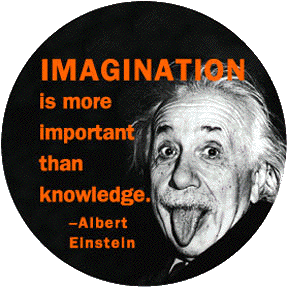Term has begun at the Certificate in Creative Writing at Vaughan College, University of Leicester, of which I am very proud to be course director. We have 20 new keen creative writing students this year, of all ages and backgrounds. As part of this year’s course, I am going to open a general discussion following each workshop for both students on the course and anyone else interested. As well as a general introduction to the course, this weeks workshop was on the theme of Imagination.
Workshop One : Imagination
“I am enough of an artist to draw freely upon my imagination. Imagination is more important than knowledge. Knowledge is limited. Imagination encircles the world.” Albert Einstein
“It is above all by the imagination that we achieve perception and compassion and hope.” Ursula K. Le Guin
Where do stories and ideas come from? It’s the question every author get’s asked by readers, and as fantasy author Mark Charan Newton says, most of us don’t have a good answer. Harlan Ellison, the famously grumpy American author of speculative fiction, tells people he pays a regular fee to a little shop in the middle of nowhere, in return for which he get’s sent six new ideas each month. He get’s angry when people believe him, instead of realising the simple truth. We all have ideas, we all have stories to tell, we all have imagination. But finding our imagination and learning to use it isn’t as simple as just having an idea.
EXERCISE : Counting Breaths
Find somewhere quiet to sit, no TV or music! Sit comfortably, either in a chair or on the floor. Now. Close your eyes and breath. Try counting your breaths, in and out. How many can you count before a stray thought distracts you? You might be surprised how difficult this is! Every time you realise you have lost count, return to your breathing and start counting again.
It’s surprising how rarely we sit quietly in this day and age. We’re all busy people, work, family, social life and everything else make free time quite rare. And when we do have it we fill it with music, TV, video games and other things. It can be really interesting just to stop for a while and look at what is happening inside your own head. How many breaths could you count? What thoughts distracted you from counting? How long before you stopped, and why?
When we look at what’s happening inside our own heads for a while, we start to see what chaos it all is! Thoughts fly around like leaves in a storm. One moment you’re worrying about something at work, the next you’re wondering what’s happening in Eastenders. The inside of a even a relatively normal persons head is utter chaos. Writer’s heads are often even worse.
To cope in the world, we all have a part of our self that tames all that chaos. This is the part of us that makes ToDo lists, checks them off, fills out spreadsheets, makes it on time to appointments, understands how to read bus timetables, remembers passwords and generally makes civilised life possible. You can picture this part of your self as a smartly dressed, highly skilled office administrator, possibly called Ian or Clare.
But, we also all have a part of our self that loves the chaos. This is the part of us that dreams. It’s the part that loves how food tastes, or the feel of a summer breeze. It’s the part that makes friendships and falls in love. The part that cries at a piece of beautiful music, or gets angry when you see somebody being hurt. This is the part that makes civilised life worth living. Imagine this part of you as a free living, long haired hippie kid in tie-dye clothing called Sky or River.
Now. To write anything worth writing, Ian/Clare and Sky/River both have to collaborate. The problem being that, by nature, they don’t get along. Ian wants to make loads of rules and have every part of the story worked out before you even put pen to paper. Sky just writes random words down because she likes the sound and expects everyone else to share her joy.
Imagination is really the act of getting Ian and Sky working together effectively. Sky grabs hold of things in the chaos of your thoughts and recognises how beautiful they can be. Ian applies the rules of grammar and structure to them so that they are expressed as strongly as possible in words. When both our logical, ordered self, and our random, chaotic self can work together, that is when truly imaginative ideas emerge.
There are two things that can help merge order and chaos. The first is learning. In creative writing that means learning what Stephen King calls the Writer’s Toolbox, which we start looking at in the second of these workshops. The second is practice. The more you work with your tools, the better you get at using them. That bit is really down to you!

Schenectady, New York. That’s where Harlan Ellison gets his ideas from. He sends ’em 25 bucks and they send him an envelope stuffed with a bunch of new ideas. The price may have gone up in the intervening years…
LikeLike
That’s the place! Re-watched the Ellison documentary just last week where he mentions it.
LikeLike